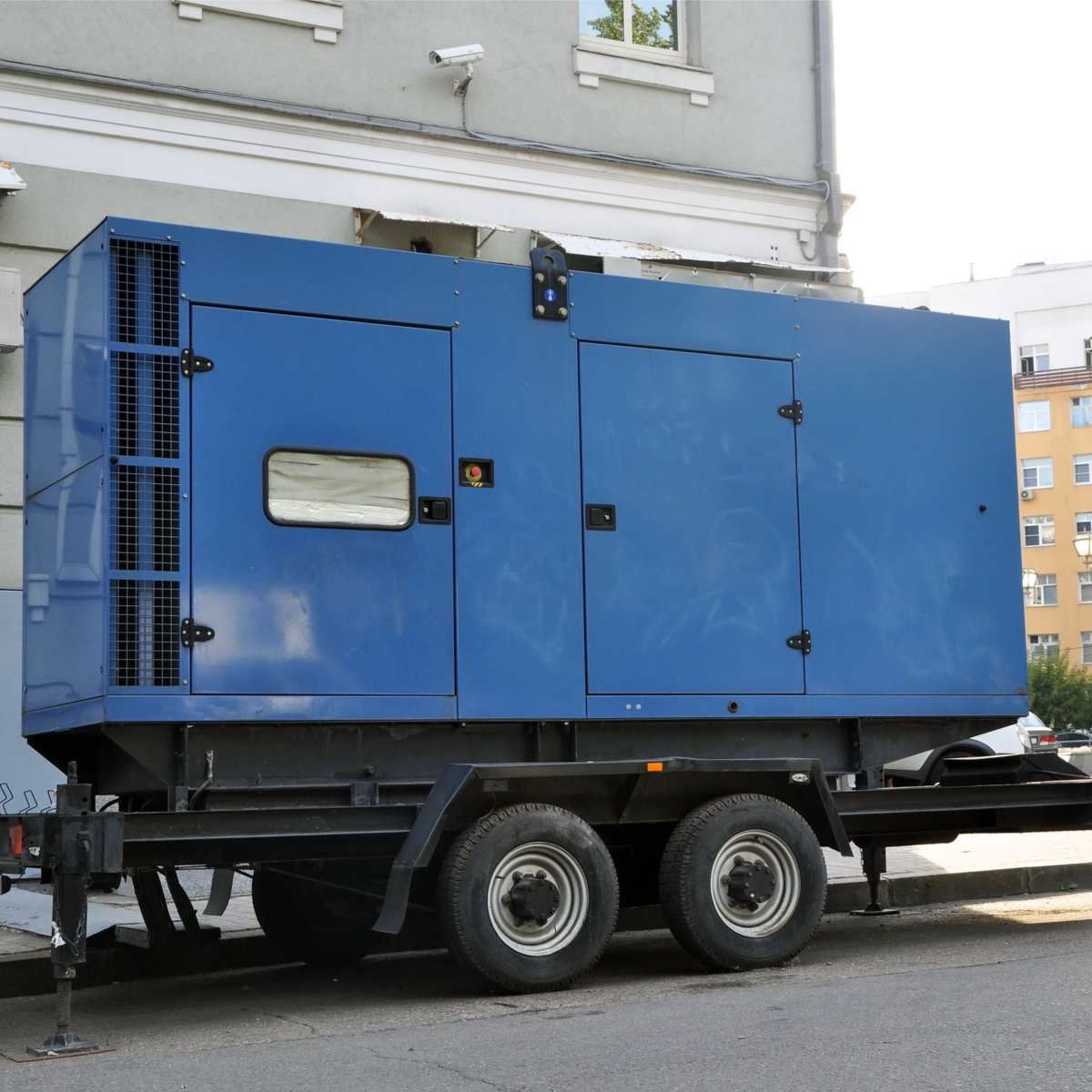
Most people don’t think about power supply logistics (or backup generators) until it’s too late. Events like storms and severe weather, equipment failure, high demand and aging infrastructure can all cause power supply issues. Don’t wait for the lights to go out to prioritize your facility’s backup power. Knowing the generator types on the market and your facility's needs are the first steps for choosing the backup power supply that’s best for your facility.
Types of Generators
Many different types of generators are on the market today, but one of the easiest ways to break generators into categories is by the type of fuel they use to generate electricity. The most common fuel sources for backup generators are:
- Gasoline
- Natural Gas
- Propane
- Diesel
Gasoline
Gasoline-powered generators are typically the smallest generators available. These generators are typically only available as portable generators, and for good reason. Gasoline generators are usually small, noisy, and less efficient - although they tend to be cheaper too. One of the best characteristics of gasoline generators is that they can be tucked away and only pulled out as needed.
Natural Gas
Natural gas generators are some of the most common standby generators on the market. If your building already has natural gas service, a natural gas generator can be very convenient. You won’t have to keep any fuel on-site for your generator because it will have a direct connection to a gas line. The downside is that if something happens to the gas supply, you will not be able to operate your generator and your facility won’t have power. Natural gas may be the preferred method to perform service to avoid special permit requirements for handling fuels like propane or diesel.
Related: Facility Contingency Planning Tips
Propane
Generators that run on propane are very similar to natural gas generators as far as size and maintenance. The main difference is that the propane will typically be stored on-site. Many portable generators, and some standby generators, are “dual fuel,” meaning they can run on different kinds of fuels. Gasoline-propane and natural gas-propane dual fuel generators can be good options for facilities that want to have a backup plan in case they lose a fuel source.
Diesel
Diesel generators are a very popular option because of their ruggedness and durability. Diesel generators are connected to tanks of diesel that are stored on-site, meaning the generator is completely independent of the grid. Because it’s independent, enough diesel has to be stored safely on-site at all times for the generator to be ready to kick into action. The high thermal efficiency of diesel engines helps minimize the amount of fuel that has to be stored, as well as the cost to operate the diesel generator. Dual fuel natural gas-diesel generators are also available to help blend the benefits of both types of generators and increase efficiency. For facilities that absolutely need to avoid downtime at all costs, diesel generators are the gold standard.
What’s Right for My Facility?
Some facilities require 100% dedicated backup power that will automatically come online during an outage and can power the entire facility. Other facilities do just fine with a portable generator that can be pulled out as needed, hooked up, and used to power only critical components like computer servers or refrigeration equipment. Determining what’s right for your facility will require you to take numerous factors into account.
What facility services are crucial to operation during a power outage? If your facility can temporarily shut down certain operations, especially ones that consume a lot of power, a smaller generator can be used to keep the facility operational. Determining the standard operating procedure during a power outage should be the first step in sizing your facility’s generator.
If not all components are required to remain operational, it may be possible to only have certain circuits powered by a standby generator. For example, if the production facility itself does not need to remain operational, it may be possible to power just the office buildings to keep the computers and servers working. Another option is to power everything except for the HVAC equipment. This will greatly reduce the required size of your generator.
For some facilities, none of these will be an option and they will need 100% standby power generation. Ironically, these can be the simplest systems to set up because nothing special has to be done. The entire building will shift its load onto the generator and nothing has to get broken out. With an automatic transfer switch, this process occurs automatically after a power outage. Typically, about 10 seconds after an outage, a standby generator will fire and be ready to get the power flowing again.
Determining the right backup power supply is not an easy task, and it can have big consequences. Tate has a qualified team of experts ready to help you make these decisions. Don’t wait for the power to be out to decide it’s time for a backup generator.
